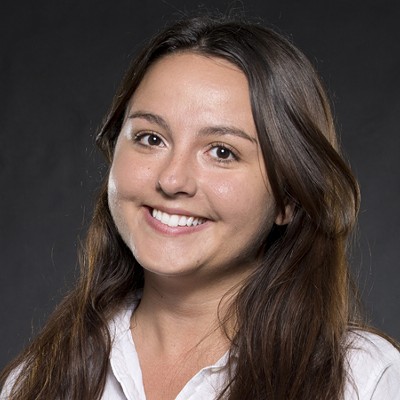After the sun set on July 10, Robin Merrill headed over to the A1A median between Oakland Park Boulevard and NE 21st Street. The stump of a black olive tree lay at her feet. The artist and owner of Upper Room Art Gallery bowed her head. “Thank you,” she said softly and poured water she collected from the Everglades on the stump and its roots. She walked a few feet over to the next stump and repeated the ceremony, then did so three more times.
“These trees are going to die, and there’s nothing I can do to save them,” Merrill says. “Right now the roots and base are still alive. I wanted to show respect and thank the trees for all they’ve done.”
To Merrill, the black olive trees are a blessing. The oxygen their leathery, teardrop-shaped leaves secrete offsets the carbon from cars’ exhaust, and their sturdy branches (which extend horizontally) give shade. But city spokesperson Chaz Adam explains these immense trees had outgrown the median, uprooted the pavement, and became “a safety hazard for our neighbors.” Last week about a dozen trees were chopped down as part of the city’s $270,000 median beautification project. Thirty palm trees, bromeliads, and silver buttonwood shrubs will be planted in the old black olive trees’ place.
“It’s sad that they’re going to put palms in there. They’ll never have the same feeling as those trees,” Merrill says. “In a perfect world, we’d let the trees grow and build around them.”
The black olive tree, or Bucida buceras, is native to the Caribbean and Central America — not South Florida. The trees can grow to be 40 to 50 feet tall. Their bark cracks and thickens with age. In the winter, yellow-bellied woodpeckers drill holes into the trunks and feed on the sap. Highly wind- and salt-resistant, the trees thrived in Fort Lauderdale.
“These trees just give, give, give,” the artist says. “It’s sad when we butcher them.”
On July 3, Merrill saw what she calls “death notices” posted on the trees in red tape stating that they would soon be cut down. Merrill was sad but understood the city’s reasons. “Times changed, and the needs of the city changed,” she says.
Merrill didn’t want the cut-down logs to be diced into mulch or rot at a landfill. She found three Native American carvers who agreed to transform the wood into miniature canoes. Merrill received the city’s permission and cooperation. Then, Merrill and the carvers moved the logs to another location to be worked on.
Though Merrill was happy that the bark would be put to good use, she couldn’t stop thinking about the trees. They had already been cut down but were technically still alive at the stumps and roots. “They will be ground up soon, but those stumps can still feel. They can still sense,” she says.
That’s when Merrill returned to the median on Sunday night and performed the mass funeral for the trees using Everglades water. “It’s not like some sign of magic or anything — just respect,” she says. “I believe that the [Everglades] water is holy.”
She hung postcards about urbanization and change on the bark — "pithy truths," as Merrill calls them. They are by California artist Ashleigh Brilliant. They read, "Whatever people can create, people can also destroy," and, "For God's sake, don't let them make any more progress!"
“This was just part of change in an urban environment,” Merrill adds. “It’s important to respect small things that don’t have a voice, like the water and the trees.”
[
{
"name": "GPT - Billboard - Slot Inline - Content - Labeled - No Desktop",
"component": "16971022",
"insertPoint": "2",
"requiredCountToDisplay": "2"
},{
"name": "Editor Picks",
"component": "15769925",
"insertPoint": "4",
"requiredCountToDisplay": "1"
},{
"name": "Inline Links",
"component": "16575154",
"insertPoint": "8th",
"startingPoint": 8,
"requiredCountToDisplay": "7",
"maxInsertions": 25
},{
"name": "GPT - Rectangle 2x - Slot Auto-select - Labeled",
"component": "15782206",
"insertPoint": "8th",
"startingPoint": 8,
"requiredCountToDisplay": "7",
"maxInsertions": 25
},{
"name": "Inline Links",
"component": "16575154",
"insertPoint": "8th",
"startingPoint": 12,
"requiredCountToDisplay": "11",
"maxInsertions": 25
},{
"name": "GPT - Leaderboard to Tower - Slot Auto-select - Labeled",
"component": "15782207",
"insertPoint": "8th",
"startingPoint": 12,
"requiredCountToDisplay": "11",
"maxInsertions": 25
}
]











